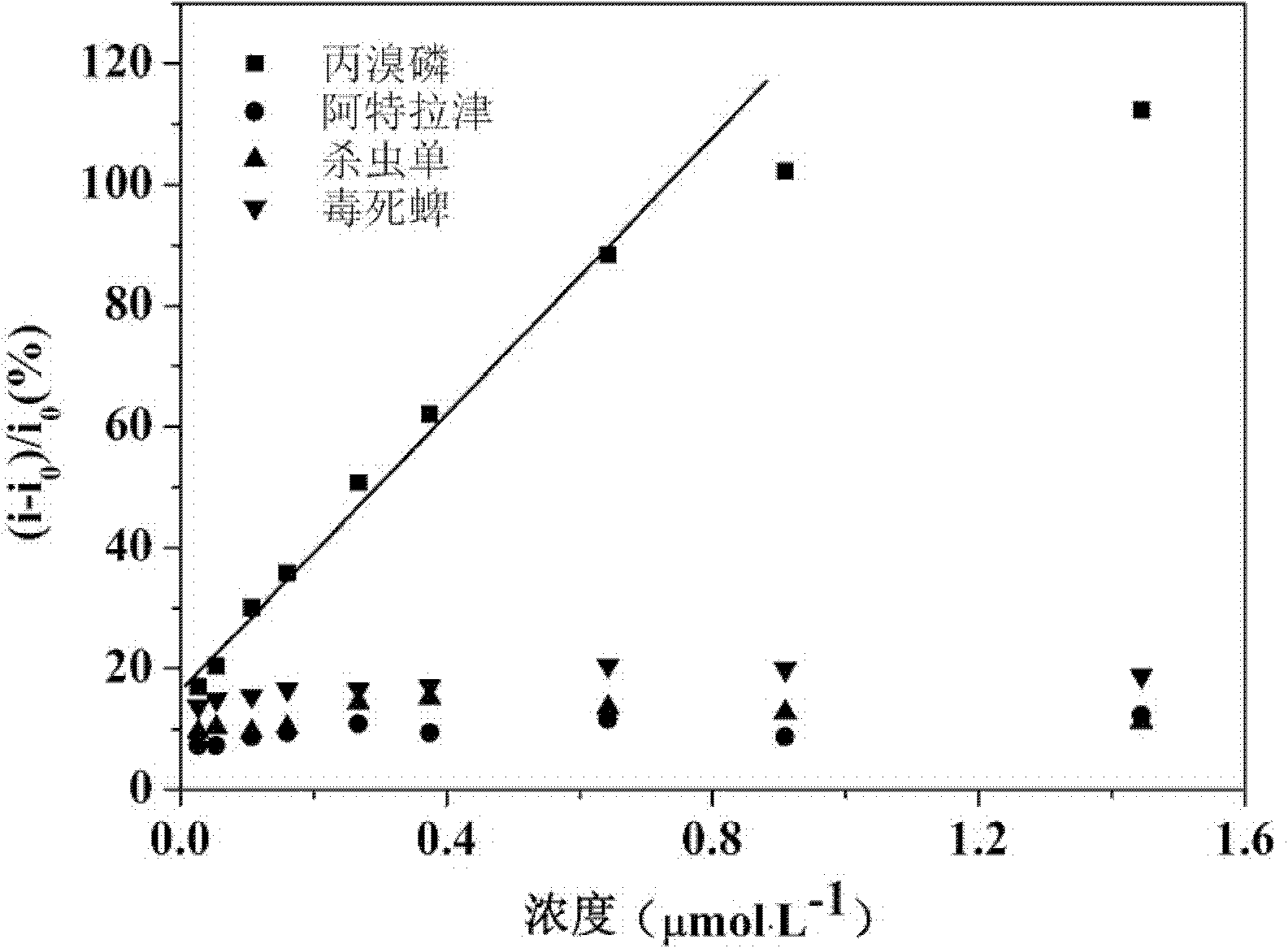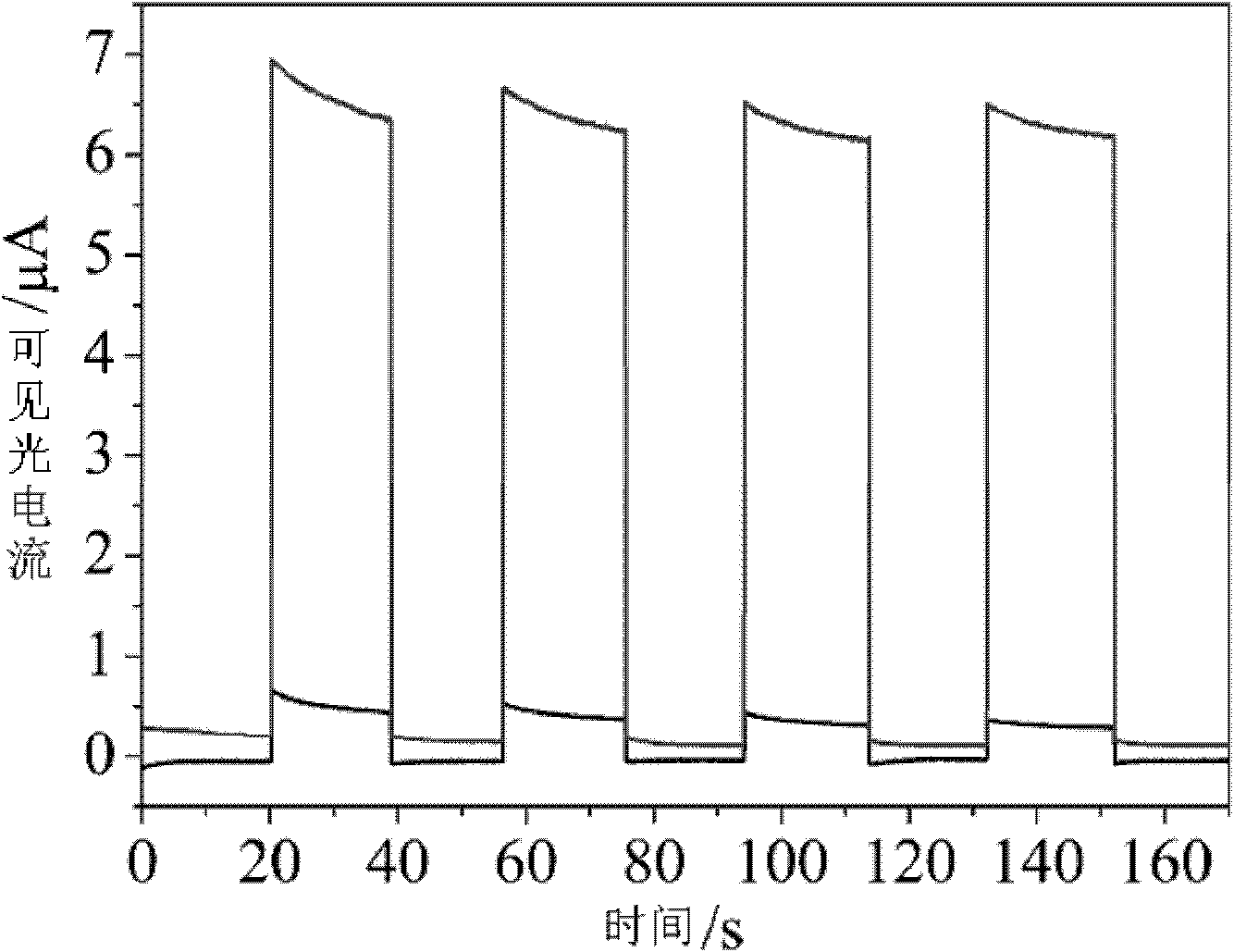Visible-light electrochemical analysis method by employing calixarene-modified electrode
A modified electrode and photoelectrochemical technology, applied in the direction of color/spectral characteristic measurement, etc., can solve the problems of unstable electrodes and detection methods, detection of non-electrochemically active substances, unsuitable for biomolecular detection, etc., to reduce the degree of photocorrosion, The effect of cheap and portable instrument and simple method
- Summary
- Abstract
- Description
- Claims
- Application Information
AI Technical Summary
Problems solved by technology
Method used
Image
Examples
Embodiment 1
[0028] TiO used in the present invention 2 The NTs electrode is referred to in the literature by Maggie Paulose et al. (Anodic Growth of Highly Ordered TiO 2 Nanotube Arrays to 134 nm in Length, Maggie Paulose, Karthik Shankar et al, J.Phys.Chem.B, 2006, 110, 16179-16184) reported in the anodic oxidation method prepared, and carried out corresponding improvements, specifically The ground and polished Ti plate was used as the anode, the Pt sheet was used as the cathode, and 0.27M HF aqueous solution was used as the electrolyte, and the pre-oxidation was carried out for 1 h in a two-electrode system with an electrode distance of 1 cm and a voltage of 20 V. After pre-oxidation, in the same system, use 0.27M NH 4 The ethylene glycol solution of F is the electrolyte, and the anodic oxidation is continued for 2 hours. TiO obtained by anodic oxidation 2 NTs were sintered at 500 °C in an oxygen atmosphere with a heating rate of 1 °C / min.
[0029] References (Photoluminescence and...
Embodiment 2
[0031] A 0.1M PBS buffer solution with pH=6.98 was prepared with double distilled water, and a series of standard solutions of profenofos with different concentrations were obtained by adding different amounts of profenofos mother liquor, and 0.1M AA was added as an electron donor. The profenofos solution containing a certain concentration was used as the electrolyte in turn, and stirred for 10 minutes to rapidly and selectively enrich the profenofos on the surface of the working electrode. Stand still, under visible light, set the applied potential of 0V (Vs.SCE), adopt the method of i-t curve, measure the visible light current and record it. The used working electrode can be fully washed with ethanol and water to renew and regenerate the electrode surface. According to the concentration of profenofos and the corresponding photocurrent change rate ((i-i 0 ) / i 0 ) to draw the working curve, the detection limit of profenofos can reach 10 -9 mol L -1 .
[0032] figure 1 It...
Embodiment 3
[0034] For the determination of the actual sample, first use tap water or river water (after preliminary filtration) to prepare the actual sample, set the concentration of profenofos to 0.1 μM, adjust the pH=6.98 with 0.1M PBS buffer, and add 0.1MAA as the electron donor . Using the test conditions set in Example 2, measure the visible light current of the solution, and calculate the concentration of profenofos in the actual sample according to the working curve drawn in Example 2. The results show that the deviation between the measured concentration and the theoretical concentration is less than 5%, reflecting the good selectivity and sensitivity of the photoelectric sensing electrode.
[0035] figure 2 Functionalization of TiO for p-tert-butylcalix[4]arene 2 The change of visible photocurrent of NTs electrode before and after adding electron donor AA, the lower curve is the visible photocurrent without adding AA, and the upper curve is the visible photocurrent after addi...
PUM
| Property | Measurement | Unit |
|---|---|---|
| absorption spectrum | aaaaa | aaaaa |
| Sensitivity | aaaaa | aaaaa |
Abstract
Description
Claims
Application Information
 Login to View More
Login to View More - R&D
- Intellectual Property
- Life Sciences
- Materials
- Tech Scout
- Unparalleled Data Quality
- Higher Quality Content
- 60% Fewer Hallucinations
Browse by: Latest US Patents, China's latest patents, Technical Efficacy Thesaurus, Application Domain, Technology Topic, Popular Technical Reports.
© 2025 PatSnap. All rights reserved.Legal|Privacy policy|Modern Slavery Act Transparency Statement|Sitemap|About US| Contact US: help@patsnap.com


